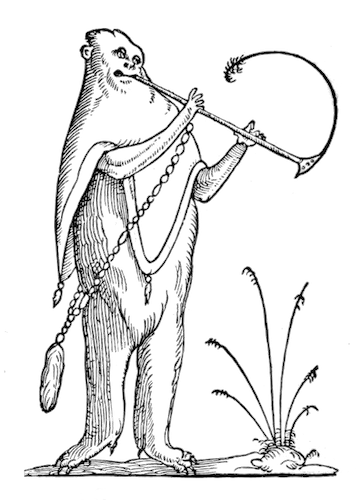
Nikolai Agnivtsev’s Little Screw (1925)
“Down with non-partisan writers! Down with literary supermen! Literature must become part of the common cause of the proletariat, ‘a cog and a screw’ of one single great Social-Democratic mechanism set in motion by the entire politically-conscious vanguard of the entire working class.”
—Vladimir Lenin
“If any ‘vintik [little screw]’ ceases to work — it’s the end.”
—Joseph Stalin
In January 1918, just three months after the outbreak of the Russian Revolution, the writer L. Kormchii (Leonard Piragis) published an article titled “A Forgotten Weapon” in the Bolshevik newspaper Pravda. “The bourgeoisie knew all too well the importance of children’s literature as a useful tool for strengthening its own dominance”, he argued. “We should not forget that the same tools, the same weapons can be used for the opposite goal.”
Nikolai Agnivtsev’s 1925 agitprop children’s book Vintik-Shpintik seems to heed Kormchii’s call. It opens on a factory filled with anthropomorphic machines, happily buzzing along in industrious harmony. The dialogue rings with the repetitive clang, whoosh, and clank of lathes, gears, and flywheels: "Вот-вот! Вот-вот! Вот!”, “Ух-ух! Ух-ух! Ух!”, “Эх-эх! Эх-эх! Эх!” Our protagonist is a “little screw” (vintik-shpintik: diminutive forms of the words for screw and spindle/rabbet), who happily participates in production, carrying out his “modest duty” (cкромный долг). One day, however, the machines are forced to choose a “delegate” to represent them. And suddenly the socialist machines resort to a more primitive way of thinking: “Я-то! Я-то! Я-то!” (That’s me! Me! Me!). Except our little screw remains silent. He patiently waits his turn. And when asked to be given the floor to make a speech, the bigger machines laugh him into silence. He doesn’t get angry, curse, or a shake a fist, we are told, he simply walks out — a one-screw strike. “He is no longer just the ‘little man’ tearfully celebrated in nineteenth-century liberal Russian literature. He is the former naught who has now felt some call to be all”, writes Evgeny Steiner, alluding to lyrics from the Russian “Internationale”. When the factory starts up again, something is wrong, and the machinic bullies realize their mistake: “Well, you just can’t live without him!” (Ну, никак не проживешь!). Embarrassed and shamefaced, they wheel themselves to his home and apologize. The book ends smugly, with the screw readying himself to return to work: “He said to them, half-turned: Ha, there you go!” (Им сказал в пол-оборота: Hy, вот, то-то!)
Illustrated by Vladimir Tvardosvsky, Vintik-Shpintik was very popular: the initial print run of 10,000 editions was followed by a 20,000 copy reissue in 1927. The same year as the book was reissued, Vladislav Tvardovsky directed an eleven-minute animated adaptation for the Leningrad Factory Sovkino, which hews close to Agnivtsev’s vision, and, according to Peter Bagrov, is the only extant “fully-fledged example” of the Leningrad school of animation. The film is slightly more emotional and comic than its source — an effect achieved, in part, thanks to the German score, which was added later, in 1931.
Vintik-Shpintik, directed by Vladislav Tvardovsky (Leningrad Factory Sovkino: 1927) — Source.
Born in Moscow, Nikolai Agnivtsev (1888–1932) was the son of a renowned lawyer who served the Judiciary of Russia. Returning from exile in Berlin after the Russian Civil War, Agnivtsev had difficulty adjusting to the new political climate — and its new expectations of literature — and pivoted from poetry to children’s books. Vintik-Shpintik was composed the same year that writer and editor Anna Grinberg described a “new” communist child reader in a 1925 issue of the Bolshevik government journal Press and Revolution: “When he is very young, he strokes a book with his little hand and says tenderly, ‘This little book’s about the U-S-S-R. I don’t know what the U-S-S-R is; I only know that it’s good.’”
Enjoyed this piece? We need your help to keep publishing.
The PDR is a non-profit project kept alive by reader donations – no ads, no paywalls, just the generosity of our community. It’s a really exciting model, but we need your help to keep it thriving. Visit our support page to become a Friend and receive our themed postcard packs. Or give a one-off donation. Already a supporter? A huge thank you for making all this possible.
Apr 30, 2025





